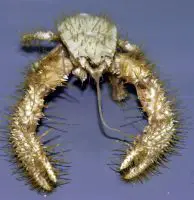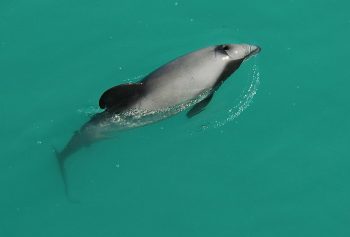Yeti crab (Kiwa Hirsuta) is a hairy decapod crab that was discovered in March 2005. It was spotted on hydrothermal vents at a depth of 7,200 feet on the Pacific-Antarctic Ridge of the South Pacific. The family of yeti crabs are thought to have first appeared around 30 million years ago. Hirsuta is a Latin word which literally means “hairy” while Kiwa represents the Polynesian divine being.
As of now, five yeti crab species have been discovered.
K. hirsuta
K. puravida
Not named yet
K. tyleri (the “Hoff” yeti crab)
K. araonae ()
Yeti crab is a squat lobster and it is also known as furry lobster. However, it is not a true crab. It is a new species and new genus of crabs. Yeti crab is a close relative of hermit crabs.
It is a bizarre-looki ng crab. It has blond-shaded hair-like structures called satae. These hair cover its legs all the way up to chelae (claws). It is a blind arthropod.
ng crab. It has blond-shaded hair-like structures called satae. These hair cover its legs all the way up to chelae (claws). It is a blind arthropod.
K. puravida yeti crab is observed to farming microbes on its legs through waving the chelae (claws). By so doing, it gets continuous supply of sulphide gas and oxygen.
The Hoff yeti crab is the strongest species of yeti crab. It can survive in extreme temperatures.
The third species of yeti crab was discovered from the “Dragon’s Breath” in the south of Madagascar. Unlike others, their chelae are smaller and hairs are present on their chest, not on claws (chelae). It has not been named yet.
The length of a yeti crab is 15 centimeters.
It looks like a carnivorous animal but it mainly eats bacteria, that are fertilized on its own legs.





